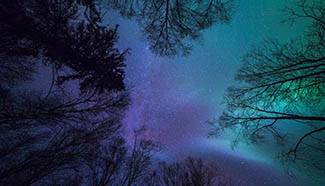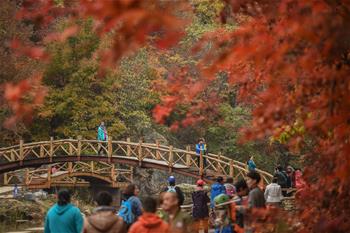SYDNEY, Oct. 6 (Xinhua) -- Starlings that nest together in Australia may boost abundance and diversity of other species, a new Aussie research has found.
Researchers from University of Sydney made the conclusion after studying a total of 1,000 metallic starlings nest in individual poison-dart trees in Australian tropical rainforests which it found had created diversity hot-spots for other species.
Metallic starling also known as shining starling, is a native of Papua New Guinea and nearby Australasian islands. It is a bird species that is part of the starling family which is more commonly known as mynas in Asia.
Lead researcher Daniel Natusch in a statement on Thursday said that the breeding colonies of metallic starlings alter the distribution of wildlife in the rainforests of Cape York in Queensland each year when as many as 1,000 birds nest in individual poison-dart trees from mid-November through the summer monsoon.
Natusch said to determine the potential effect of nesting starlings on local species distribution, he and his colleagues surveyed the abundance and diversity of animals beneath starling colonies from November 2013 till last April by comparing the assemblages of animals using colony sites versus nearby areas.
The researchers found starling colonies attracted a wide range of other species, including insects, amphibians, reptiles, birds and mammal, many of which were 100 to 1,000 times more abundant under trees with nests than under those without.
Animals may have been attracted to the bounty under nesting trees, which included seeds, fallen starling eggs and nestlings, and guano-fertilized roots.
These tiny ecosystems, roughly 140 square meters of ground beneath colony trees, may be among the highest biomass and most diverse aggregations of animals in the world, making them ecological hot-spots that are disproportionately important for conservation.
Moreover, these hot-spots include high concentrations of invasive species such as feral pigs and cane toads, and targeted control of these invasive species may improve conservation outcomes.
"Our discovery of such a remarkable and spectacular animal hotpot in remote tropical Australia reveals the wonder that wild places still have to offer, and reinforces the need for ongoing natural history studies in the remote tropics," said Natusch.
The findings by Natusch and his colleagues were published in scientific journal Plos One on Wednesday.










